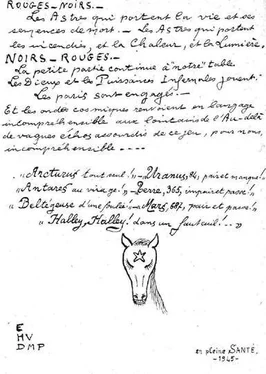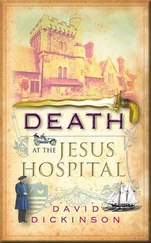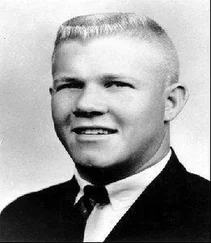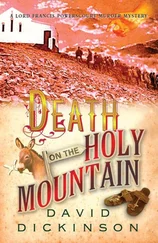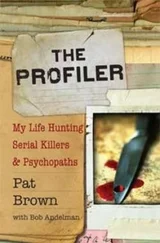The next man to testify was Joseph Scarella, a maître d’hôtel at the Café Weber, and a Petiot patient who had, in fact, with his physician’s help, escaped deportation to Germany. Petiot had written a false certificate claiming that Scarella suffered from syphilis. Scarella also told how he had wanted to flee because there was not much work for a master chef in Occupied Paris who did not want to serve the Germans. When he approached Petiot about departure, Scarella said, he was told to bring 100,000 francs and some jewels as a precaution because it sometimes took a lot of time before people found work.
Why didn’t the Scarellas attempt to leave with Petiot’s escape organization? He was prepared to depart, the witness said, but his wife had refused.
By the time Scarella left the stand, it was already a quarter after five in the afternoon and the witnesses scheduled to testify next had left the courtroom. Leser adjourned the court. It had been another long day in a trial that only seemed to become more sensational and controversial, and no closer to resolution.
31.
“A TASTE FOR EVIL”
THE COLDEST FISH AND THE MOST BRILLIANT CRIMINAL, YET THE MOST CONVINCING TALKER THAT I EVER MET IN MY LONG CAREER IN THE FIELDS OF CRIME AND MEDICINE.
—Dr. Paul on Marcel Petiot
ON Tuesday, March 26, the courtroom was again packed beyond capacity in what was arguably the largest audience yet. This was the highly anticipated session devoted to expert witnesses, including the main attraction, the celebrated forensic scientist Dr. Albert Paul. He would make jury and audience alike, as Le Pays put it, “grit its teeth,” but his testimony would not be as shocking or as pivotal as it had been in the Landru case.
Wearing a gray tweed suit with a white handkerchief in his left breast pocket, Paul described how the murderer had scalped his victims and removed the facial mask with a single cut, making a circular incision from the chin to the hairline. He then proceeded to dismember the body. Despite the detailed study of the remains, however, there were many fundamental questions that Paul and his forensic team could not answer. Wisely, Dupin, the prosecutor, decided to introduce the uncertainties before the defense could exploit them.
Paul explained that they found three main types of human remains: cadavers more or less intact, burned and broken fragments, and debris in “one hundred bony pieces.” The latter included four collarbones, ten shoulder blades, seven humerus bones (upper arm from shoulder to elbow), and five ulna and four radius bones (forearm). There were three complete sternums, a fourth sternum without an appendix, and one extension of the sternum known as a xiphoid process. The forensic team had also uncovered one complete pelvis, eight ilia (the largest bone in the pelvis), and seven sacrums (the triangular bone at the spine, pelvic cavity, and hips), as well as two kneecaps, two femora (thighbone), five tibias (shinbone), and two fibulas (calf bone). There were two “globular skulls,” both with an attached mandible, or lower jaw, and a number of scalps, in red, blond, brown, and almost black hair.
All the bones at rue Le Sueur were human. Only two bodies, however, were found complete, both “very mummified.” One was a man approximately forty to fifty years of age with an estimated height of five-foot-three. The other was of a woman, twenty-five to thirty, just under five-foot-six.
“How many bodies were there in all?” Dupin asked.
“We were able to conclude that the number of victims was a minimum of ten, but the vast amounts of hair recovered suggested a much greater number.”
Floriot asked if any white hair had been found on the premises of rue Le Sueur. “No, not a scrap,” Paul answered. This was significant because one of Petiot’s alleged victims, Dr. Braunberger, had white hair, and another one, Joachim Guschinow, had some white strands.
“Were you able to determine the age and gender of the victims?”
“Five were men, five women,” Paul said. The tallest victim was a male with a height of 1.78 meters (5′10″) and the shortest, a female of 1.50 (4′11″). The height was estimated based on measuring the humerus, radius, cubitus, and tibia bones. As for the ages of the victims, Paul testified that they ranged from twenty-five to fifty. The youngest was a female and the oldest a male; in fact, the male victims tended to be significantly older than the female and also, as his report put it, “robust.” It was difficult to add more specifics because the quicklime had devoured the bodies for too long a period before the discovery.
“What was the date of the murders?”
“We can say that these are old cadavers, but we cannot specify further because the level of putrefaction is such that we cannot determine the exact date when the subject was killed. In effect, the debris was in such a state of decomposition that the toxicology examination failed to provide definite conclusions.”
“What was the cause of death?”
Paul admitted that his team could not establish that either. “Not a single bullet wound or fracture of the skull. That leaves the possibility of asphyxiation, stabbing, strangling, and poison. There’s no way to tell. Could it have been an injection? Perhaps, but I am not in the habit of reveling in hypotheses.” Looking at the dissections, each cut beginning, as far as he could tell, in the same spot on the spine, the limbs, or the face, Paul believed that it must have been the work of someone highly skilled in anatomy, almost certainly a physician.
“Didn’t you make statements about similar, dismembered bodies that were found in the Seine in 1942?” Dupin asked.
“Yes,” Paul said, noting that for a period of eight months, between May 1942 and January 1943, the Seine had been “stuffed” with bodies and body parts in small parcels that had been fished out at a frightening rate. At that time, he further stated, “I shared my fears with a colleague that ‘it must be a doctor who did this and I am afraid that it might be one of my students.’ ”
As he had earlier told Commissaire Massu, Paul was struck in particular by the scalpel marks on the thighs of the cadavers, both of the victims on rue Le Sueur as well as those retrieved from the Seine. He explained that, when he changed instruments or took a break during an autopsy or dissection, he had the habit of not laying the scalpel on the table. Instead, he would stick it in the right thigh or arm of a subject “like a dressmaker sticks a pin in a pincushion.” This was a safe way to prevent injury and contamination. “Well, the bodies that I scrutinized have precisely these punctures of the scalpel.”
Floriot intervened, pointing out that Marcel Petiot had received only “mediocre” in his dissection course in medical school.
“That astonishes me,” Paul said. “In any case, it is regrettable because he dissects very well.”
“Pardon me,” Floriot said. “You should say, ‘The dissector dissects very well.’ ”
Two other forensic experts, Dr. René Piédelièvre of the Institut médico-légal and Professor Henri Griffon of the Toxicological Laboratory at the Préfecture de Police, were scheduled to appear on the stand that afternoon. Like Paul, Piédelièvre praised Petiot’s skill with the scalpel. Later in his memoirs, he went further, calling Petiot simply his “colleague.” At the trial, he offered no earth-shattering revelation. The bodies were simply too “putrefied and damaged by the quicklime” to draw many conclusions, including the time of death.
Petiot, who appeared to be taking notes, asked the witness if they could not have used a method based on insect larvae.
“Yes, the diptera and coleoptera lay eggs on corpses. By measuring the size of the larvae and examining their tracks as they burrow through the flesh, one can arrive at a fairly accurate estimation. In this case, the lime and fire had destroyed the traces of the insects.”
Читать дальше
